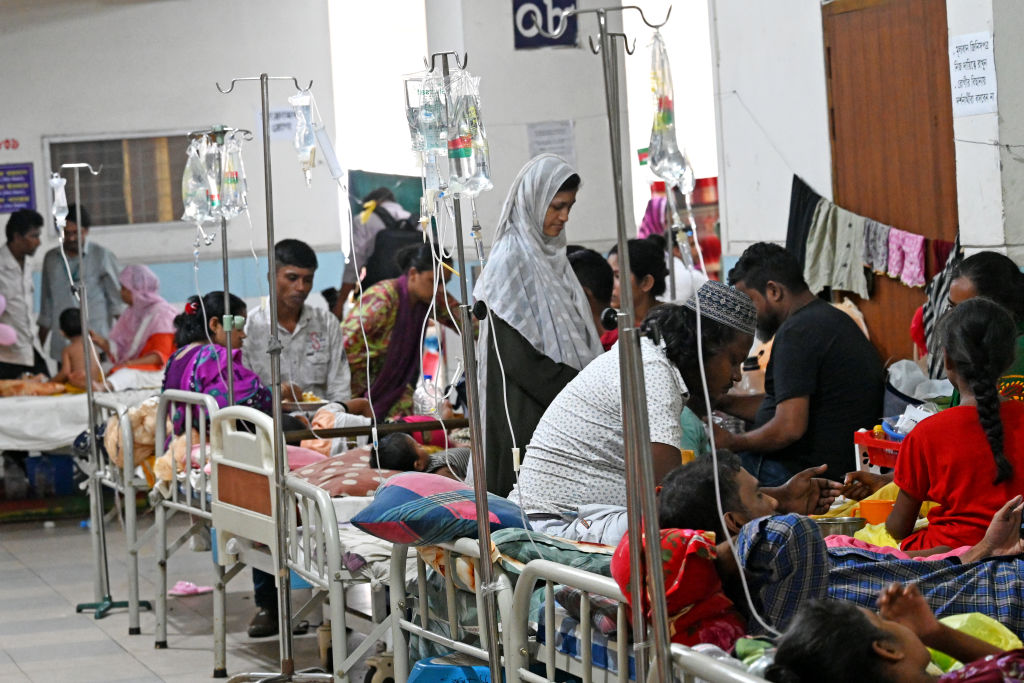NASA preps for Mars trip by forcing researchers to deal with exceptionally slow internet


A rocky field near a Hawaiian volcano is the closest humans have come to living on Mars — but the research they're doing there could help future astronauts on the first manned journey to the Red Planet, currently scheduled for 2025. In order to make the study realistic and productive, the scientists in Hawaii need to live like they're actually on Mars, a simulation they've committed to for an entire year.
But life on "Mars" isn't for wimps: The six researchers occupy a 1,000-square-foot domed structure, wear mock spacesuits whenever they leave the building, eat shelf-stable food and, perhaps worst of all, have to deal with Mars' super slow internet connection:
What's the Internet situation like?[Physicist and engineer Christiane Heinicke:] Since we are on "Mars," all our messages travel through interplanetary space for 20 minutes one way before they reach Earth. That is true for emails, web browsing and Skyping, for example. Since nobody wants to wait 40 minutes for an answer during a conversation, we don't use Skype, or any other form of real-time conversation. We communicate with our families only by email, or video recordings that are attached to an email. [The New York Times]
Read more about the project in The New York Times, or follow the researchers' adventures on Twitter.
The Week
Escape your echo chamber. Get the facts behind the news, plus analysis from multiple perspectives.

Sign up for The Week's Free Newsletters
From our morning news briefing to a weekly Good News Newsletter, get the best of The Week delivered directly to your inbox.
From our morning news briefing to a weekly Good News Newsletter, get the best of The Week delivered directly to your inbox.
A free daily email with the biggest news stories of the day – and the best features from TheWeek.com
Jeva Lange was the executive editor at TheWeek.com. She formerly served as The Week's deputy editor and culture critic. She is also a contributor to Screen Slate, and her writing has appeared in The New York Daily News, The Awl, Vice, and Gothamist, among other publications. Jeva lives in New York City. Follow her on Twitter.
-
 Hegseth rejects release of full boat strike footage
Hegseth rejects release of full boat strike footageSpeed Read There are calls to release video of the military killing two survivors of a Sept. 2 missile strike on an alleged drug trafficking boat
-
 ‘It’s another clarifying moment in our age of moral collapse’
‘It’s another clarifying moment in our age of moral collapse’Instant Opinion Opinion, comment and editorials of the day
-
 Trump vows naval blockade of most Venezuelan oil
Trump vows naval blockade of most Venezuelan oilSpeed Read The announcement further escalates pressure on President Nicolás Maduro
-
 Nobody seems surprised Wagner's Prigozhin died under suspicious circumstances
Nobody seems surprised Wagner's Prigozhin died under suspicious circumstancesSpeed Read
-
 Western mountain climbers allegedly left Pakistani porter to die on K2
Western mountain climbers allegedly left Pakistani porter to die on K2Speed Read
-
 'Circular saw blades' divide controversial Rio Grande buoys installed by Texas governor
'Circular saw blades' divide controversial Rio Grande buoys installed by Texas governorSpeed Read
-
 Los Angeles city workers stage 1-day walkout over labor conditions
Los Angeles city workers stage 1-day walkout over labor conditionsSpeed Read
-
 Mega Millions jackpot climbs to an estimated $1.55 billion
Mega Millions jackpot climbs to an estimated $1.55 billionSpeed Read
-
 Bangladesh dealing with worst dengue fever outbreak on record
Bangladesh dealing with worst dengue fever outbreak on recordSpeed Read
-
 Glacial outburst flooding in Juneau destroys homes
Glacial outburst flooding in Juneau destroys homesSpeed Read
-
 Scotland seeking 'monster hunters' to search for fabled Loch Ness creature
Scotland seeking 'monster hunters' to search for fabled Loch Ness creatureSpeed Read
